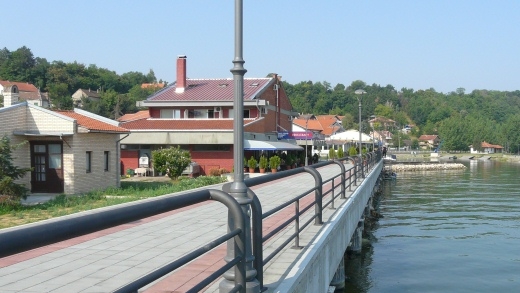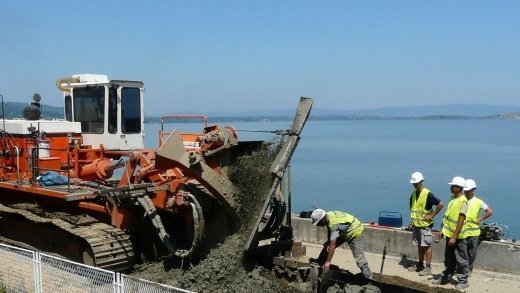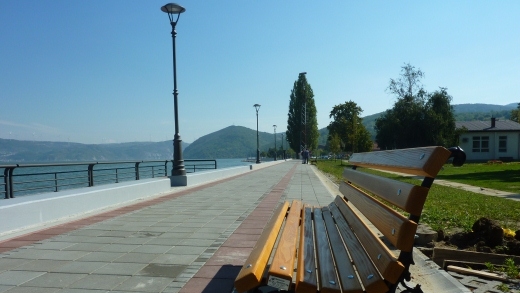“This is a big thing for us, because all of our development plans depend on the elimination of the biggest threat for us here – high water and underground water from the Danube. It is really terrible when you experience water coming from everywhere you look and you are powerless to do anything to stop it,” says Mijatovic.
Although similar to flood protection programs implemented elsewhere, one specific request by local authorities posed a particular challenge for this otherwise straightforward infrastructure project –to increase flood protection, but not diminish the view of the Danube from the town’s central promenade. This aspect was critical for local tourism development plans.
The response to this request was the introduction of mobile flood barriers that can easily be installed in a matter of hours should an emergency arise. To protect from underground flooding, a rupture-resistant foil was also installed up to 7 meters into the ground. This will prevent water from a swollen Danube from penetrating sandy and porous layers of soil and flooding the area.
Tapping into the potential of tourism in Golubac to boost local economic development is of paramount importance for the local authorities and the municipality plans to use IPA funds from the European Union to rehabilitate a nearby 14th-century fortress situated on the Danube just outside of town. This fortress stands as one of the most well-preserved medieval fortifications in this region and has the potential to become a major tourist attraction.
By increasing economic activity in the town through increased flood safety and improved tourism infrastructure, the authorities in Golubac are hoping to reverse the trends of a declining and aging population in the town. The population here now stands below 10,000 and the average wage is 40% lower than the national average. Zoran Pajkic, the ambitious mayor of Golubac, is optimistic about the municipality’s future prospects.



